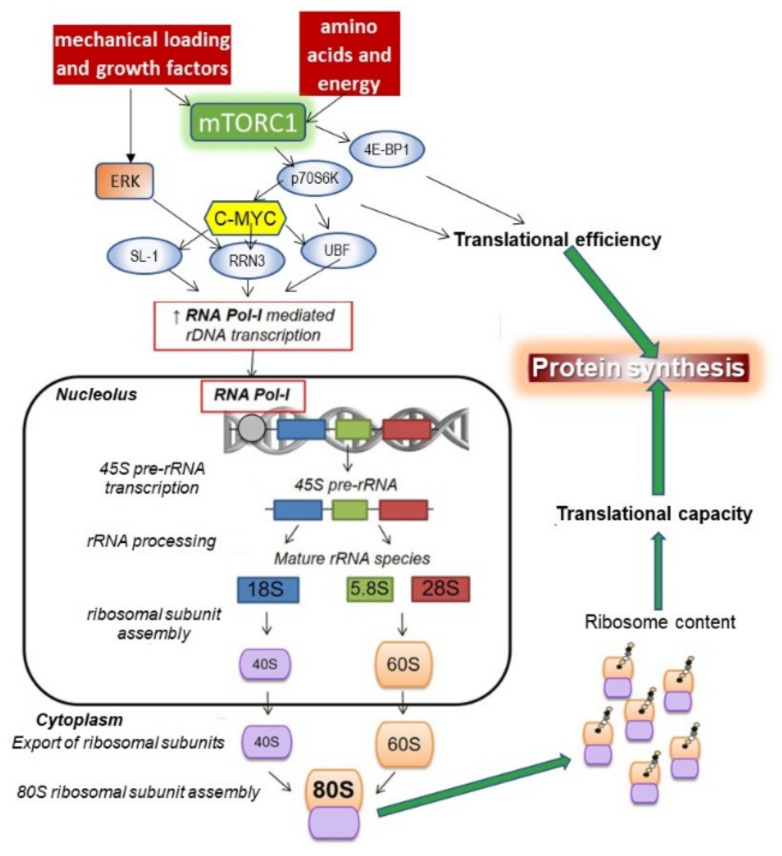Figure 11.
Regulation of ribosomal capacity and efficiency of muscle protein synthesis by nutritional and mechanical factors. Multiple signalling pathways including extracellular signal-regulated kinase (ERK) and mTORC1 mediate activation of the nucleolar RNA Polymerase I (Pol-I) by a number of factors which form a transcriptional complex, the “Pol I regulon”, at the rDNA promoter [275]. The elevated expression of the proto-oncogene transcription factor C-MYC, achieved through mTORC1/S6K1 [287], plays a central role stimulating the Pol II-dependent transcription of a cohort of factors associated with Pol I regulon including RNA polymerase I-specific transcription initiation factor RRN3, (also known as TIF-1A, transcription initiation factor 1A) and upstream binding factor (UBF). Ribosome biogenesis involves transcription of the 45S ribosomal RNA precursor (45S pre-rRNA), processing of the 45S pre-rRNA into the smaller rRNAs (18S, 5.8S and 28S rRNAs) followed by assembly of these rRNAs and other ribosomal proteins into ribosomal subunits (40S and 60S) which are exported into the cytoplasm. The 80S ribosome is the mRNA translating unit, requiring mTORC1-mediated activation of initiation through p70S6K (p70 kDa ribosomal protein subunit kinase 1) and 4E-BP1 (eukaryotic initiation factor 4E binding protein 1). mTORC1 also regulates RNA Pol-II (which transcribes the ribosomal proteins and other proteins required for transcription) and Pol–III, (which synthesises small structural RNAs such as 5S rRNA and transfer RNA (tRNA) (not shown). Modified from Fyfe et al. 2018 [288] under a Creative Commons Attribution 4.0 International License.

